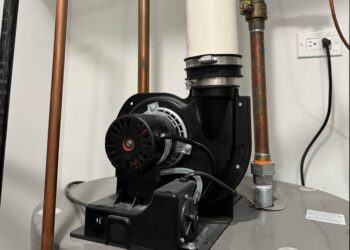Chronic sinus congestion can interfere with daily life, disrupt productivity, and cause discomfort. For otolaryngologists, addressing persistent sinus issues often involves evaluating common triggers and exploring effective treatment options. Balloon sinuplasty has emerged as a minimally invasive procedure that provides relief for many patients. This article covers its role in nasal health, compares it to traditional surgical methods, and explains how to determine candidacy.
Identifying the Causes of Persistent Sinus Congestion
Understanding chronic sinus congestion starts with identifying its causes. Here are some common factors:
- Environmental Triggers: Allergens, dust, and pollutants can irritate nasal passages, causing inflammation and congestion.
- Structural Abnormalities: Issues like a deviated septum or nasal polyps may block sinus drainage, leading to recurring congestion and discomfort.
- Chronic Sinus Infections: These often stem from untreated or poorly managed acute sinusitis, resulting in long-term symptoms.
- Allergies and Asthma: Both conditions can worsen sinus congestion and make managing symptoms more difficult.
Pinpointing these causes is key to finding effective, lasting relief for chronic sinus congestion.
Exploring Treatment Options
Patients with persistent sinus congestion often try various remedies. Initial treatments include nasal corticosteroids, saline irrigation, and antihistamines. These methods can reduce swelling, clear nasal passages, and manage inflammation for many patients.
Surgical interventions become necessary when medication proves ineffective. Traditional sinus surgery has been used to create better drainage pathways for the sinuses. Innovations like balloon sinuplasty now offer a minimally invasive alternative for specific patient groups.
Reviewing Pros and Cons
Pros of Balloon Sinuplasty
This procedure involves threading a small, flexible catheter into the sinus opening. A balloon attached to the catheter is then inflated, gently restructuring the sinus passage to improve drainage. The procedure’s minimally invasive nature allows many patients to undergo it under local anesthesia with a quick recovery time. Most individuals can resume normal activities within a few days, making it an appealing option for busy schedules.
Cons of Balloon Sinuplasty
This procedure is typically recommended for individuals with specific sinus blockages or mild to moderate chronic sinusitis. Severe cases or patients with structural abnormalities, such as extensive nasal polyps, often require traditional surgical methods instead. Another factor involves costs. Balloon sinuplasty may be more expensive upfront in some instances, depending on insurance coverage or the clinic performing the procedure.
Determining if You Are a Candidate
Selecting the right candidates for balloon sinuplasty involves a detailed assessment of their sinus health. Otolaryngologists often use imaging studies, such as CT scans, to identify blockages that may respond well to the procedure. Evaluating a patient’s medical history can provide further insights into the root cause of their symptoms.
Ideal candidates typically include those with chronic sinusitis who have not responded to medication but do not have severe anatomical complications. During consultations, an ENT specialist can help determine whether this procedure will address a patient’s specific needs or if traditional surgery is more appropriate.
Consult a Specialist
Persistent sinus congestion requires tailored approaches to improve a patient’s quality of life. For qualified individuals, treatments like balloon sinuplasty are less invasive options that offer faster recovery times and relief from frustrating symptoms. Schedule a consultation today to learn more about advanced treatments and which solutions may best suit your needs.
- 4 Reasons To Schedule Regular Water Heater Maintenance
- Crawl Space Repairs: Local Case Studies from Belleville
- The Benefits of Primary Care for Preventing Future Health Issues
- The Impactful Addition of Higher Education for Your Resume: Elevate Career Prospects
- Am I a Good Candidate for Stem Cell Therapy?




